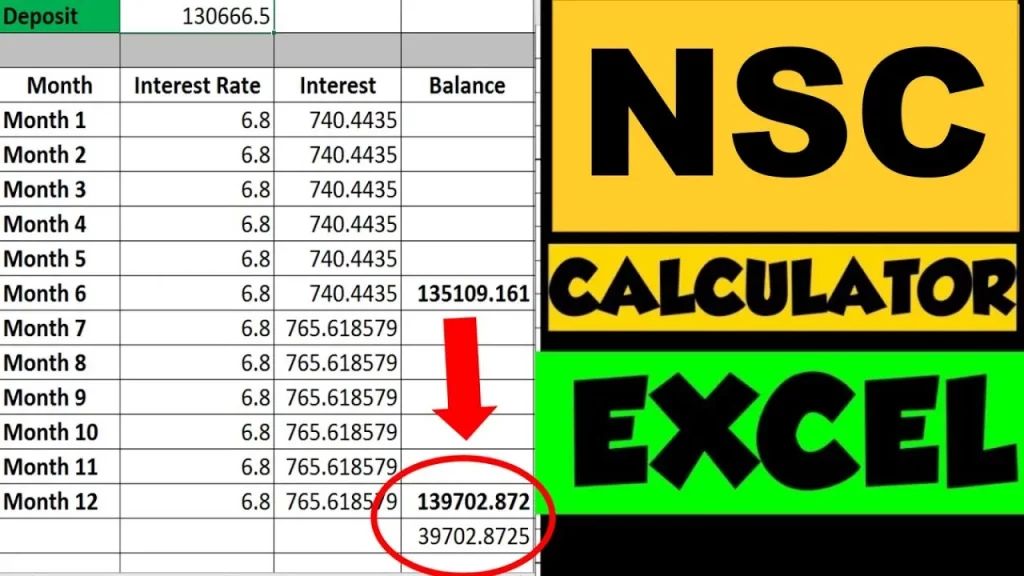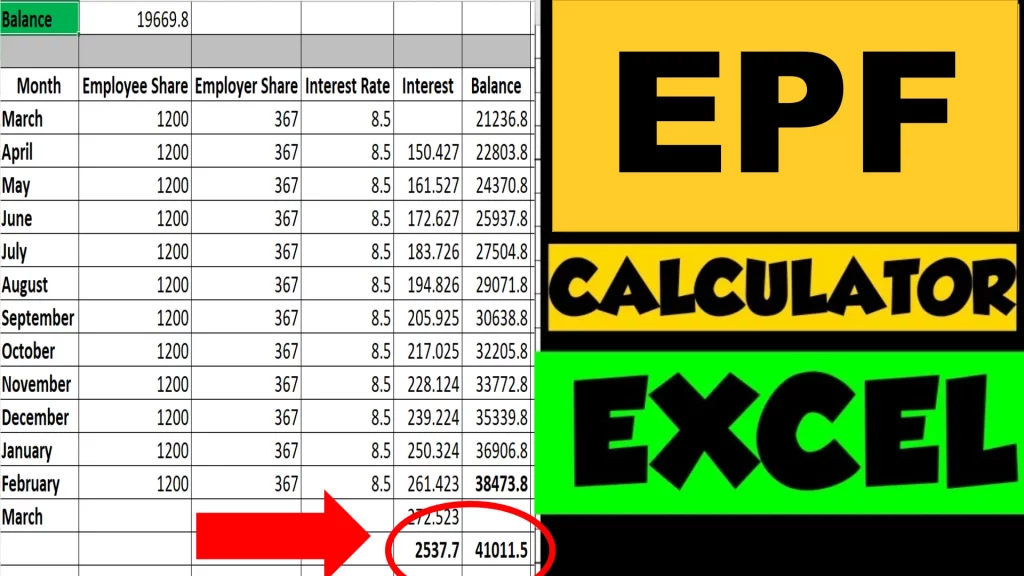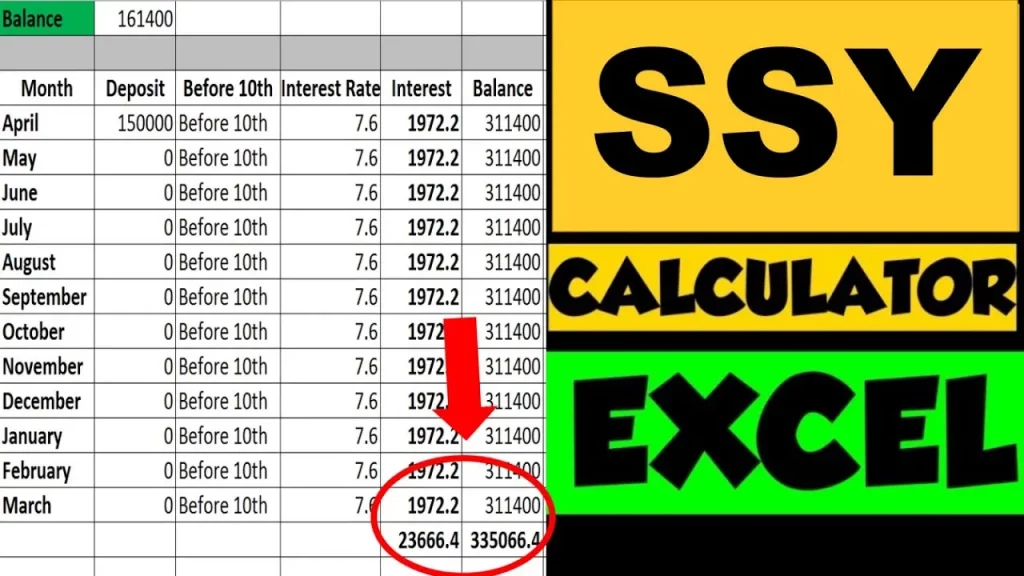PPF full form is Public Provident Fund which is one of the best Saving Scheme in India. There are multiple PPF Account benefits you should be knowing when you open PPF account or have an existing one. Some of the benefits include Income Tax Benefits, Low risk Saving Scheme, loan and withdrawal facilities in PPF, etc.
You can get the PPF Calculator excel sheet at the bottom of this article.
- PPF Account Benefits and Calculator Video
- 1. Government Backed Scheme
- 2. Low Risk Saving Scheme
- 3. Income Tax Benefits
- 4. Long Term Savings
- How to Get Maximum Interest in PPF Video
- 5. Flexibility in Contributions
- 6. Loan and Partial Withdrawal
- Download PPF Excel Sheet Calculator
- Conclusion
- Frequently Asked Questions
Let us see important PPF Account Benefits in detail. Watch below video to know more:
PPF Account Benefits and Calculator Video

Watch more Videos on YouTube Channel
Let us now understand Benefits of PPF Account one at a time.
1. Government Backed Scheme
- PPF or Public Provident Fund is a government backed saving scheme in India
- Which means the interest rates and interest earned in your account is backed by Government and is guaranteed
- This gives us a sense of relief from thinking about medium to high risks investments like mutual funds or stocks.
- You don’t have to worry about losing your money in PPF.
2. Low Risk Saving Scheme
- Since PPF is a government backed saving scheme, it can be considered as low risk investment, since the principal amount and interest earned is fixed once it gets accumulated in your PPF account
- You get monthly interest in your PPF account and yearly compounding, which means the interest earned every month in your PPF account is added back to your balance at the end of financial year
- This helps you earn more interest in upcoming years in PPF account
Below is the video on how much interest you get in PPF account with Rs. 1000 monthly deposits:
PPF Interest Calculation Examples Video

3. Income Tax Benefits
- You get income tax benefits in your PPF account on your deposits
- Maximum of Rs. 1.5 Lakh can be deposited in your PPF account which can be claimed under Section 80C
- Section 80C has a deduction limit of Rs. 1.5 Lakh in financial year, only if you choose Old Tax Regime to calculate income tax
- You will not get tax benefits with PPF if you choose new tax regime for income tax calculation purpose
- Apart from tax benefits on deposits, the interest earned in PPF account is also not taxable. You don’t have to pay tax on the PPF Interest
- The entire maturity amount that you get after 15 years from PPF account is non-taxable. Making PPF account fall under EEE (Exempt Exempt Exempt) category
ALSO READ: New Tax Regime vs Old Tax Regime Which is Better
4. Long Term Savings
- PPF has a lock in period of 15 years
- Once you start PPF account, you have to keep it active for 15 years, with minimum of Rs. 500 deposit every financial year
- Hence PPF helps you for your long term savings and goal
- In reality, PPF account will be opened for complete 15 financial years, hence PPF can extend to 16th year as well before you encash the maturity amount
- Also, after 15 years of lock in period, you have the option to extend PPF account with a block of 5 years
- While extending PPF account, you have the option to either extend with or without making any deposits
How to Get Maximum Interest in PPF Video

5. Flexibility in Contributions
- This is one of the best benefit in your PPF account. You have the flexibility to deposit amounts as and when you want to
- You can deposit Rs. 1000 in the current month, Rs. 2000 in next month, Rs. 0 in third month and Rs. 5000 in 4th month, etc. and there is no hard rule to deposit specific amount for the given month
- Also the number of contributions in a financial year has no limit currently.
- Please note that to keep your PPF account active, you need to make minimum of Rs. 500 deposit in a financial Year
ALSO READ: Mutual Fund Calculator – 10 Years Returns
6. Loan and Partial Withdrawal
- You the the loan facility in your PPF account after completing 5 years
- The loan interest rate will be usually 2% higher than the current interest rate of PPF (which is 7.1% for July to September 2025 )
- Apart from loan facility, you also get the partial withdrawal facility in your PPF account
- Not entire amount can be withdrawn from PPF, but partial withdrawal is allowed given certain conditions are met like child’s higher education, marriage, etc.
Download PPF Excel Sheet Calculator
Click below button to download PPF Excel sheet calculator for offline calculations:
Conclusion
So you get multiple benefits in PPF account such as Government Backed Scheme, Low Risk Scheme, Income Tax Benefits under Section 80C, Long Term Savings, Flexibility in Contributions, Loan and Partial Withdrawal.
These are only the few of the PPF account benefits. The most important benefit you’ll get in PPF account is it helps you to achieve your long terms goals with period of 15 years or more while saving income tax at the same time with old tax regime.
You can also use my online PPF Calculator to know interest amount in your PPF account.
Comment below your queries about PPF account if you have any.
Frequently Asked Questions
How much will I get after 15 years in PPF?
Considering that you invest Rs. 1000 every month in PPF account, you’ll get Rs. 3,15,572 as maturity amount out of which Rs. 1,35,572 is the interest earned after 15 years in PPF.
Is PPF available for 5 years?
No. PPF lock in period is 15 years so the tenure of PPF account is 15 years. But after completing 5 financial years, you can make partial withdrawals from PPF after meeting certain conditions.
Which is better PPF or FD?
It depends on your goals. If your goal is long term with 15+ years of tenure than PPF is better as it has income tax benefits. For short term goals with tenure of 6 months to 3 years, FD is better to achieve your goal when not looking for income tax benefits.
What if I invest 5000 in PPF for 15 years?
With Rs. 5000 monthly deposits in PPF, your total deposits in FY will be Rs. 60,000. For 15 years, total deposits will be Rs. 9 lakh. This will give you total maturity amount of Rs. 15.77 lakh out of which interest earned is Rs. 6.77 lakh, considering 7.1% of interest rate throughout the tenure.
Below is the screenshot of PPF interest calculations:
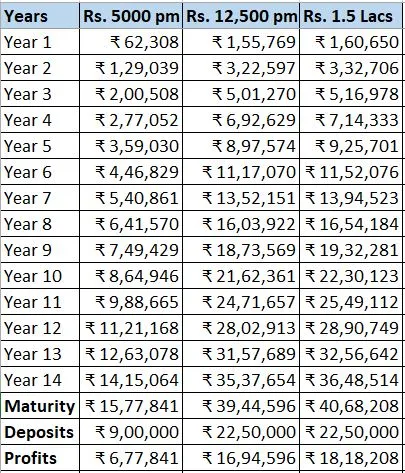
Save Home Loan Interest Amount!
Use Home Loan Excel Calculator that will help you to Save Interest Amount on Home Loan EMI.
Click below button to download Home Loan EMI and Prepayment Calculator in Excel:
Watch how Home Loan Calculator in Excel Works
Income Tax Calculator App – FinCalC
For Income Tax Calculation on your mobile device, you can Download my Android App “FinCalC” which I have developed for you to make your income tax calculation easy.
What you can do with this mobile App?
- Calculate Income Tax for FY 2025-26 and previous FY 2024-25
- Enter estimated Investments to check income tax with Old and New Tax Regime
- Save income tax details and track regularly
- Know how much to invest more to save income tax
- More calculators including PPF, SIP returns, Savings account interest and lot more
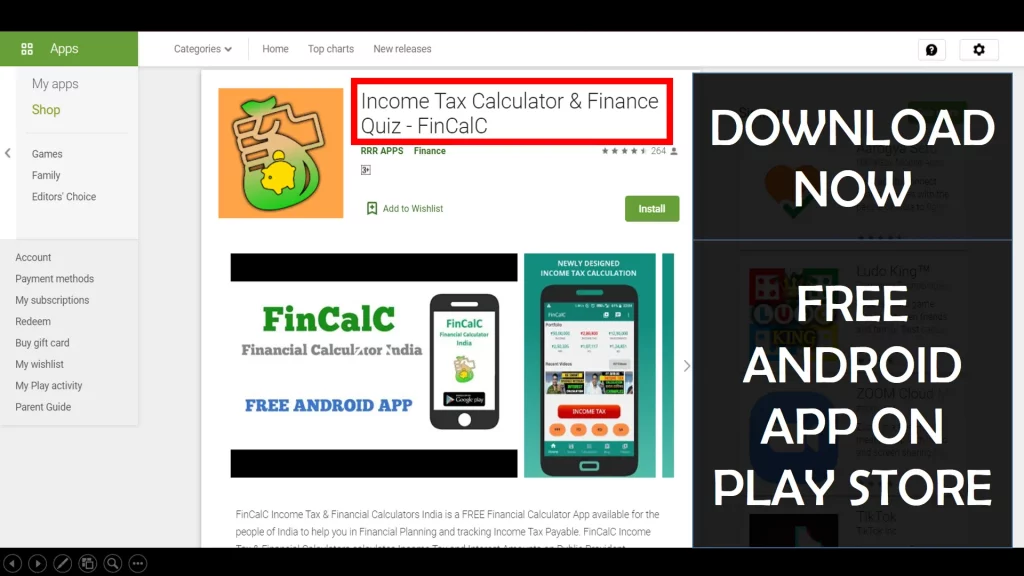
Use Popular Calculators:
- Income Tax Calculator
- Home Loan EMI Calculator
- SIP Calculator
- PPF Calculator
- HRA Calculator
- Step up SIP Calculator
- Savings Account Interest Calculator
- Lump sum Calculator
- FD Calculator
- RD Calculator
- Car Loan EMI Calculator
- Bike Loan EMI Calculator
- Sukanya Samriddhi Calculator
- Provident Fund Calculator
- Senior Citizen Savings Calculator
- NSC Calculator
- Monthly Income Scheme Calculator
- Mahila Samman Savings Calculator
- Systematic Withdrawal Calculator
- CAGR Calculator
I’d love to hear from you if you have any queries about Personal Finance and Money Management.
JOIN Telegram Group and stay updated with latest Personal Finance News and Topics.
Download our Free Android App – FinCalC to Calculate Income Tax and Interest on various small Saving Schemes in India including PPF, NSC, SIP and lot more.
Follow the Blog and Subscribe to YouTube Channel to stay updated about Personal Finance and Money Management topics.



